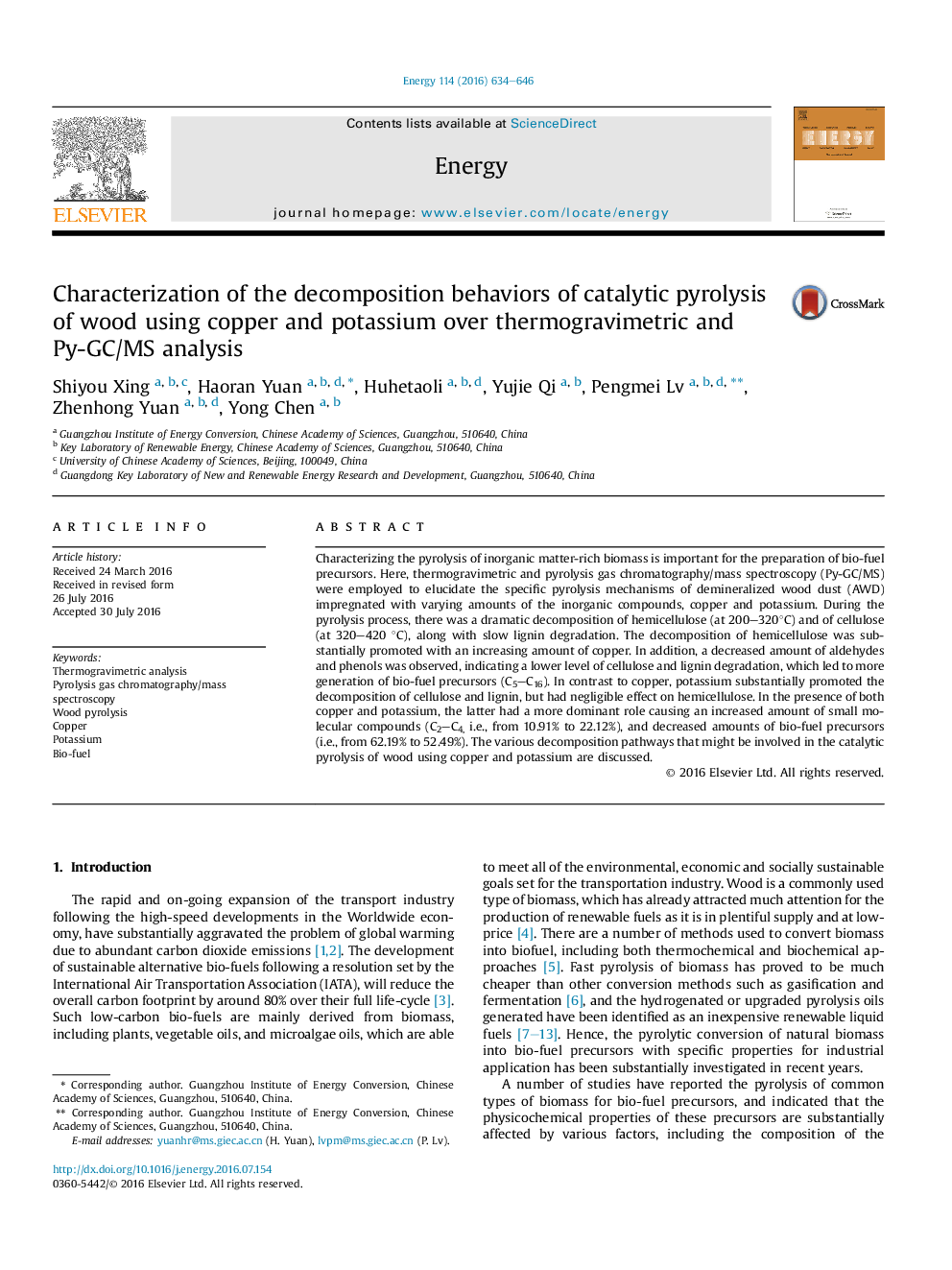| Article ID | Journal | Published Year | Pages | File Type |
|---|---|---|---|---|
| 8072874 | Energy | 2016 | 13 Pages |
Abstract
Characterizing the pyrolysis of inorganic matter-rich biomass is important for the preparation of bio-fuel precursors. Here, thermogravimetric and pyrolysis gas chromatography/mass spectroscopy (Py-GC/MS) were employed to elucidate the specific pyrolysis mechanisms of demineralized wood dust (AWD) impregnated with varying amounts of the inorganic compounds, copper and potassium. During the pyrolysis process, there was a dramatic decomposition of hemicellulose (at 200-320°C) and of cellulose (at 320-420 °C), along with slow lignin degradation. The decomposition of hemicellulose was substantially promoted with an increasing amount of copper. In addition, a decreased amount of aldehydes and phenols was observed, indicating a lower level of cellulose and lignin degradation, which led to more generation of bio-fuel precursors (C5-C16). In contrast to copper, potassium substantially promoted the decomposition of cellulose and lignin, but had negligible effect on hemicellulose. In the presence of both copper and potassium, the latter had a more dominant role causing an increased amount of small molecular compounds (C2-C4, i.e., from 10.91% to 22.12%), and decreased amounts of bio-fuel precursors (i.e., from 62.19% to 52.49%). The various decomposition pathways that might be involved in the catalytic pyrolysis of wood using copper and potassium are discussed.
Related Topics
Physical Sciences and Engineering
Energy
Energy (General)
Authors
Shiyou Xing, Haoran Yuan, Huhetaoli Huhetaoli, Yujie Qi, Pengmei Lv, Zhenhong Yuan, Yong Chen,
